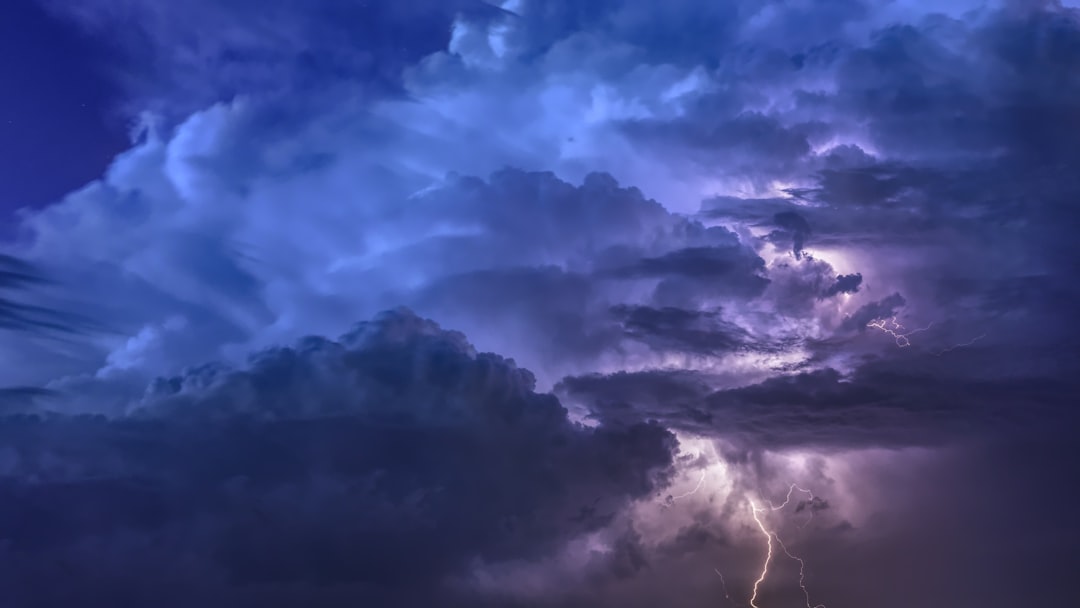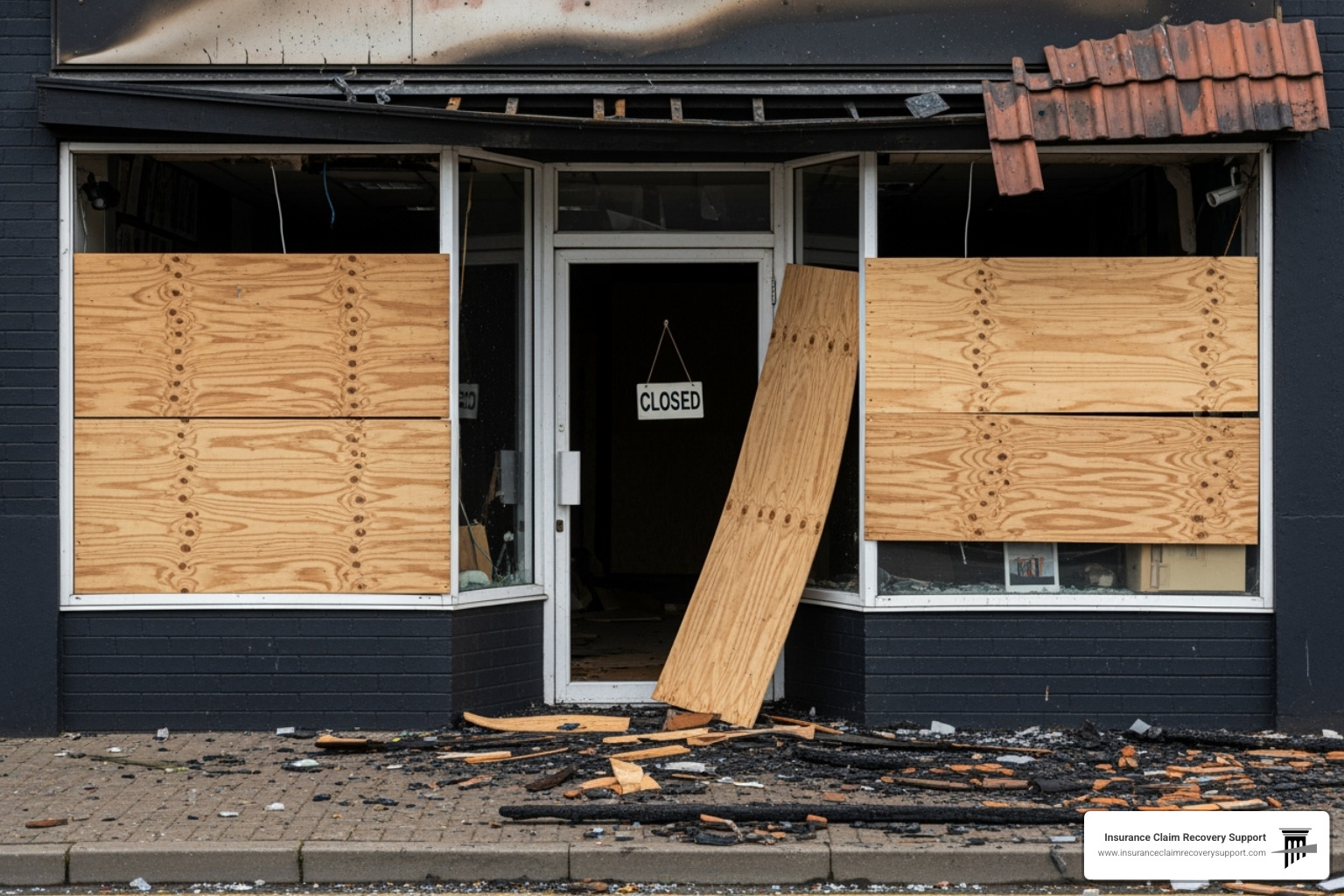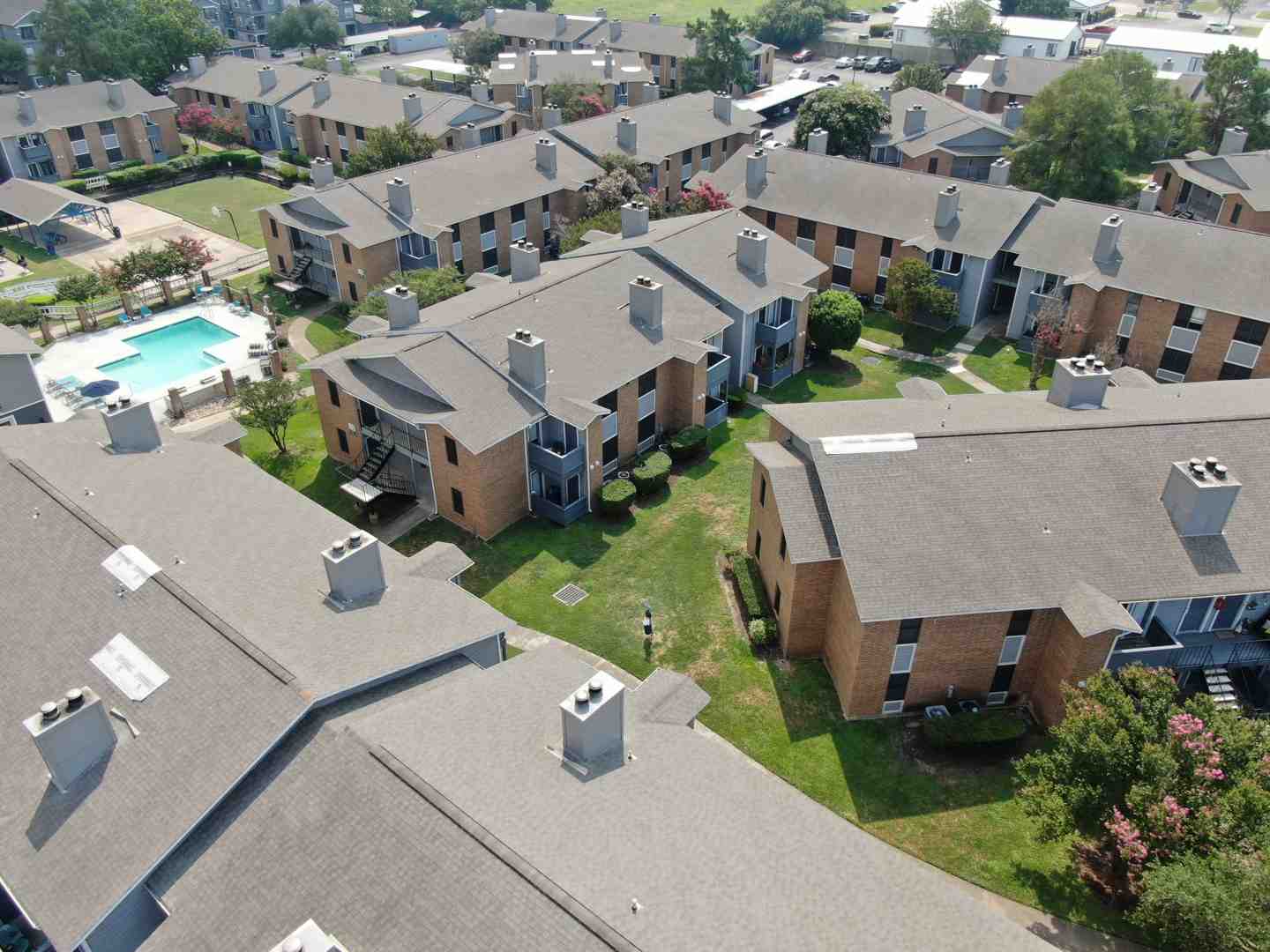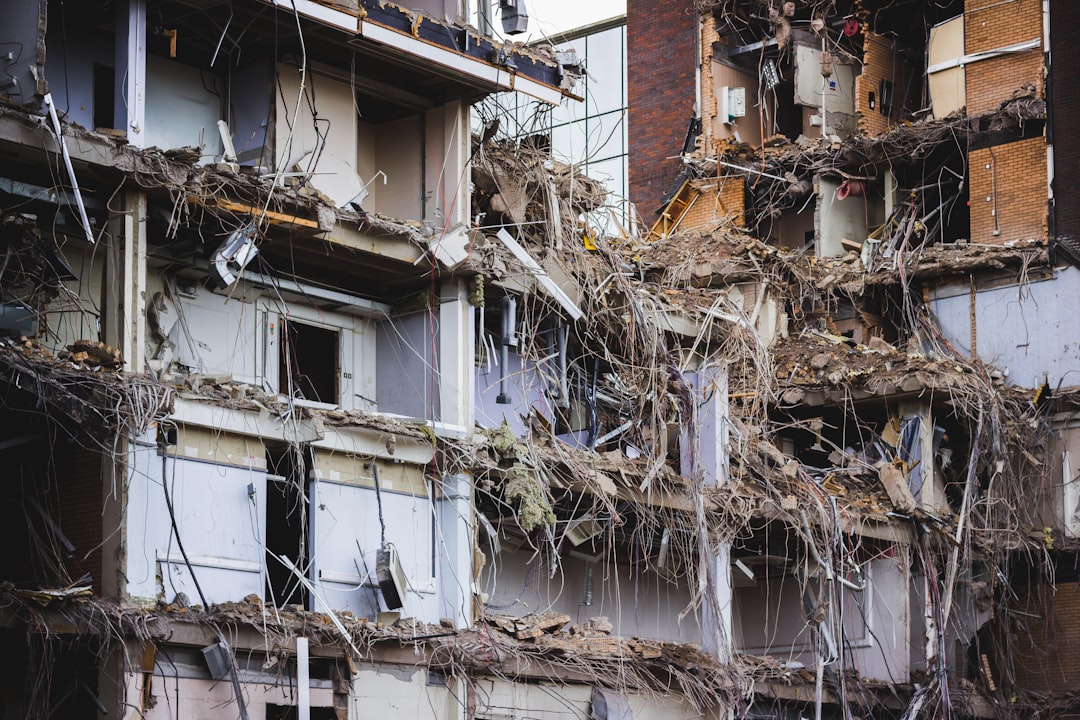The Truth About Thunder: Myths and Facts
Can thunder cause damage? While thunder itself doesn’t cause physical damage, the phenomena associated with thunderstorms, such as lightning, strong winds, and hail, certainly do. Thunder is the sound produced by the rapid expansion of air heated by a lightning strike, but it’s the accompanying weather elements we need to worry about.
Quick facts:
– Thunder is the sound caused by lightning; it doesn’t damage buildings directly.
– Lightning strikes and high winds can cause severe property damage worth hundreds of dollars.
– Associated dangers include electrical surges, tree falls, hail damage, and fires.
Let’s dive in to debunk the myths and understand the facts about thunder and how thunderstorms can impact your property.
As an experienced public adjuster and CEO of Insurance Claim Recovery Support LLC, I’ve handled countless claims for properties damaged by thunderstorms. From electrical surges to fallen trees, understanding the true risks helps in better preparation and quicker recovery.
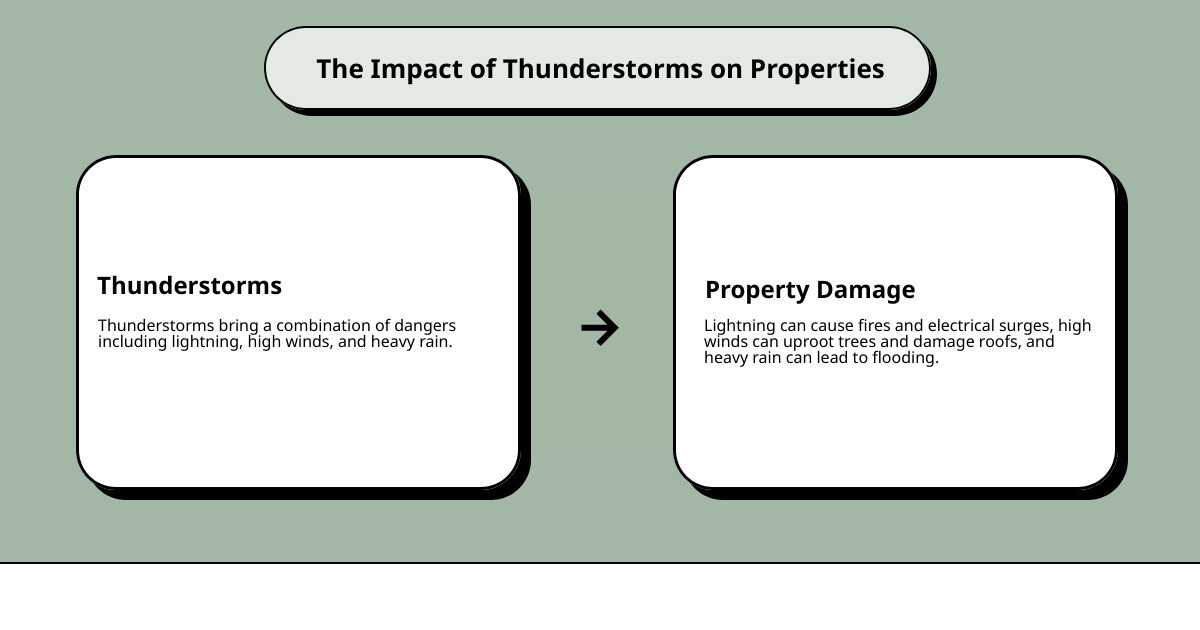
Next, let’s explore the science behind thunder and how it, along with other elements of a thunderstorm, can cause substantial damage.
The Science Behind Thunder and Its Potential for Damage
Thunderstorms are fascinating, but they can also be dangerous. While many people think of lightning as the primary threat, thunder itself can cause significant damage. Let’s break down the science behind thunder and its potential risks.
Shock Wave
Thunder is essentially a shock wave created by the rapid expansion of air due to the intense heat of a lightning strike. This shock wave can be powerful enough to cause physical damage, much like an explosion.
Property Damage
Most people don’t realize that the sheer force of thunder can cause property damage. For example, the intense pressure wave from a nearby lightning strike can shatter windows or even crack walls. A commenter from Northern Virginia recently shared how a thunderstorm caused unusual loud sounds that felt like something smashing into their house. This is a classic example of how the shock wave from thunder can mimic the effects of a physical impact.
Internal Contusion
Though rare, the shock wave from thunder can cause internal contusions if someone is very close to the source of the sound. This is similar to the injuries caused by the concussive force of an explosion.
Eardrum Rupture
One of the more immediate risks of thunder is the potential for eardrum rupture. Thunder can reach sound levels that are harmful to the human ear. If the thunder is loud enough and close enough, it can cause temporary or even permanent hearing damage. According to a discussion on Reddit, while thunder typically doesn’t cause hearing loss, extremely close lightning strikes can produce thunder that is loud enough to be harmful.
Temporary Deafness
Even without causing permanent damage, loud thunder can lead to temporary deafness. This is usually a short-term issue, but it can be disorienting and dangerous, especially if it occurs while you are performing tasks that require full sensory awareness.
Understanding the science behind thunder and its potential for damage can help you better prepare for thunderstorms. Next, we’ll delve into the various types of thunderstorm-related damage and how they affect homes and properties.
Types of Thunderstorm-Related Damage
Thunderstorms can be incredibly destructive, impacting homes and properties in various ways. Here are the key types of damage you should know about:
Flash Floods
Flash floods are sudden and intense floods caused by heavy rainfall during thunderstorms. They can occur within minutes, turning streets into rivers and causing significant water damage to homes, vehicles, and infrastructure.

High Winds
Straight-line winds, often exceeding 50 mph, are responsible for most wind damage during thunderstorms. These winds can topple trees, damage roofs, and even overturn vehicles. Downbursts, a type of straight-line wind, can be as destructive as tornadoes, with speeds over 100 mph.
Hail Damage
Hailstones can range from pea-sized to as large as softballs. When they fall during thunderstorms, they can shatter windows, dent vehicles, and damage roofs. The cost of repairing hail damage can quickly add up, making it one of the more expensive forms of thunderstorm-related damage.
Power Outages
Thunderstorms can cause power outages by damaging power lines and transformers. Lightning strikes and high winds are common culprits. These outages can last from a few minutes to several days, disrupting daily life and even causing food spoilage and business interruptions.
Lightning Strikes
Lightning strikes can cause extensive damage through direct hits or secondary effects like electromagnetic pulses (EMP). A direct hit can ignite fires, damage electrical systems, and even cause structural damage. EMPs can fry electronics and appliances, making them useless.

Electrical Charge
The electrical charge from a lightning strike can surge through power lines and into homes, damaging anything plugged into an outlet. This includes computers, televisions, and kitchen appliances. The cost of replacing these items can be significant.
PVC Plumbing
PVC plumbing systems are not immune to thunderstorm damage. Lightning can cause a ground reference potential change, leading to electrical surges that can damage underground pipes. This can result in leaks and costly repairs.
Understanding these types of thunderstorm-related damage can help you better prepare and protect your property. Next, we’ll explore how thunderstorms specifically affect homes and properties.
How Thunderstorms Affect Homes and Properties
Thunderstorms bring more than just rain and lightning. They can cause significant damage to homes and properties in various ways.
Roof Damage
One of the most common issues during thunderstorms is roof damage. High winds can rip off shingles or even entire sections of a roof. If a tree falls on your roof during a storm, the damage can be even more severe. Tornadoes, which often accompany thunderstorms, can completely remove flat roofs from commercial buildings.
“Tornadoes can easily rip off flat roofs and shingles from commercial buildings. The combination of high winds and flying debris can cause severe damage, leading to interior water damage and mold if not promptly addressed.”
Source
Overturned Vehicles
Strong winds from thunderstorms can also overturn vehicles. This is especially true in the case of tornadoes, where the powerful winds can lift and toss cars and trucks like toys. Overturned vehicles can block roads and cause additional damage to nearby structures.
Tree and Utility Pole Damage
Tree and utility pole damage is another significant concern. Lightning can strike trees, causing them to split and fall. These falling trees can crush cars, damage roofs, and take down power lines. Utility poles are also vulnerable to high winds and lightning strikes, leading to widespread power outages.
“Lightning strikes are not just limited to direct lightning strikes on a building but can strike trees which then could split, falling through your roof.”
Source
Window Breakage
Windows are particularly vulnerable during thunderstorms. The intense pressure differences and flying debris can shatter windows, exposing the interior to further damage. Broken windows compromise a building’s structural integrity and can lead to water damage and mold.
Metal Melting
Believe it or not, metal melting can occur during thunderstorms. Lightning strikes can cause intense heat, leading to the melting of metal components like roofs or tanks. This is usually due to long-duration continuing currents that produce significant heat.
“The heating and subsequent burn-through of metal sheets, as on a metal roof or tank, are to a first approximation proportional to the total charge injected into the metal at the air-arc interface.”
Source
Understanding these potential damages can help you take preventive measures to protect your home and property.
Next, we’ll discuss some preventative measures and safety tips you can take during thunderstorms.
Preventative Measures and Safety Tips During Thunderstorms
When a thunderstorm is on the horizon, taking proactive steps can make a huge difference in protecting your home and family. Here are some essential tips:
Unplug Electronics
Unplug your electronics before the storm hits. Lightning can travel through wiring and phone lines, potentially ruining your computers, TVs, and other gadgets. To be safe, unplug these devices to prevent damage.
Use Surge Protectors
Surge protectors can help shield your electronics from power surges caused by lightning. However, be aware that a direct lightning strike can still bypass these protectors. Investing in high-quality surge protectors can offer an extra layer of security.
“Lightning can travel through wiring and phone lines which can ruin your computers, televisions, stereos, and other electronics.”
Source
Avoid Landlines
During a thunderstorm, avoid using landline phones. Lightning can travel through phone lines, posing a risk of electrical shock. Stick to mobile phones or cordless phones if you need to make a call.
Electrical System Inspection
After a storm, it’s crucial to have your electrical system inspected by a licensed electrician. This step ensures there are no hidden damages that could lead to bigger problems later.
“If your home gets hit by lightning during a storm call an electrician to inspect and repair your home.”
Source
Safe Shelters
Always seek shelter in a sturdy building during a thunderstorm. Avoid small sheds or standalone structures that offer little protection. If you’re caught outside, stay away from trees and other tall objects that can attract lightning.
“Stay in interior rooms away from windows to avoid injury.”
Source
By following these preventative measures and safety tips, you can minimize the risk of damage during a thunderstorm.
Next, we’ll cover how Insurance Claim Recovery Support can help you maximize your settlement for thunderstorm damage.
Insurance Claim Recovery Support: Maximizing Your Settlement for Thunderstorm Damage
When a thunderstorm hits, the aftermath can be overwhelming. From roof damage to electrical issues, the costs can add up quickly. This is where Insurance Claim Recovery Support LLC steps in to help you navigate the complex world of insurance claims.
Advocacy for Policyholders
Our team works tirelessly on your behalf. We understand that dealing with insurance companies can be daunting. Our goal is to make the claims process as smooth as possible, ensuring that you receive the settlement you deserve.
Accurate Damage Assessment
Lightning strikes and high winds can cause severe damage. For example, a homeowner in Dallas faced $50,000 worth of tornado damage. By meticulously documenting every aspect of the damage and negotiating with the insurer, we helped them secure a settlement that fully covered their repair costs, minus the deductible.
Expert Negotiation
Insurance companies may undervalue or even deny your claim. Our experts specialize in policy interpretation and claim negotiation. We fight for a settlement that truly covers the cost of repairs and replacements.
Local Expertise
Texas is one of the states most prone to lightning and storm damage. Our extensive experience dealing with local insurance companies gives us a unique edge. We understand the specific challenges Texans face and use this knowledge to your advantage.
Comprehensive Knowledge
Our team is skilled in handling not just lightning damage, but also related fire and storm damage. This ensures that no matter how complex your situation, we can handle it with expertise and care.
“Lightning damage can be severe and costly. We specialize in accurately assessing the extent of the damage and fighting for a settlement that truly covers the cost of repairs and replacements.”
Source
By choosing Insurance Claim Recovery Support LLC, you can face the aftermath of a thunderstorm with confidence. We are here to ensure your property is restored and your financial interests are protected.
Next, we’ll address some frequently asked questions about tornado damage and how to best prepare for these destructive events.
Conclusion
Safety First
When it comes to thunderstorms, safety should always be your top priority. Stay indoors, away from windows, and avoid using wired electronics or plumbing. These simple steps can significantly reduce the risk of injury from lightning strikes or electrical surges. Opening windows during a storm can allow damaging winds to enter your home, so keep them closed and secure.
Insurance Coverage
Understanding your insurance coverage is crucial. Many homeowners’ policies cover damage from thunderstorms, including lightning strikes and hail damage. However, it’s important to review your policy to know what is and isn’t covered. For example, some policies may only offer Actual Cash Value (ACV) for older roofs, which could leave you with out-of-pocket expenses.
Fact: Annually in America, there are more than 20 million lightning strikes that actually hit the ground, causing over $1 billion in damage reported to insurance companies. Source
Professional Inspection
After a thunderstorm, conduct a thorough inspection of your property. While you can do a preliminary check for obvious damage, a professional roof inspection is critical for identifying issues that may not be visible to the untrained eye. A licensed contractor can provide a comprehensive assessment, helping to strengthen your insurance claim.
Tip: If you suspect any of your electrical systems have been affected, have a licensed electrician inspect them before turning the power back on to prevent further damage. Source
By following these guidelines, you can better prepare for and recover from thunderstorm-related damage. At Insurance Claim Recovery Support LLC, we are committed to helping you navigate the complexities of insurance claims, ensuring you receive the maximum settlement possible.
For more information on how we can assist you, visit our Public Adjuster Services page.
Stay safe, stay informed, and let us help you protect your home and financial well-being.


